Lampang is a city in northern Thailand., often visited on the way to Chiang Mai or even Chiang Rai. Nestled in the basin where the Wang River flows peacefully, 100 km southeast of Chiang Mai (and some 600 km from the capital, Bangkok), Lampang was a prosperous city just over 100 years ago, when the teak wood trade was in full swing.
Wood is not its only source of income, as the city was also famous for its ceramics and more recently for its coal mine. Lampang is considered above all as a place to visit resolutely more cultural than for its nature, where there are certainly green mountains, but which do not have as much charm as those further north.
However, there are some absolutely unique temples there, the most famous of which is the Wat Phra That Lampang Luang, which skillfully combines the Lanna architecture and Burmese influence. But the idea here is to show you what is possible to see in the city itself, which is largely overshadowed by Chiang Mai despite its undeniable charm.
Like a breath of old
In the old town, there is a special and peaceful atmosphere. The horse-drawn carriages circulating around are part of it. Even the songthaews, these particular taxis using pick-ups as public transport are part of the decor, here, they have as in each city their own little color specific to Lampang, in yellow and green or also in blue.
Lampang is known for having a large number of ancient buildings, teak wooden houses, remains of this Lampang's glorious past, although it remains today a fairly large city in northern Thailand (60 inhabitants).
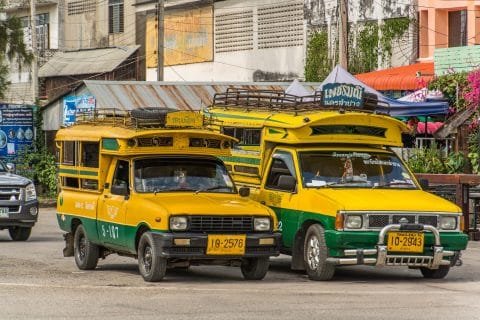

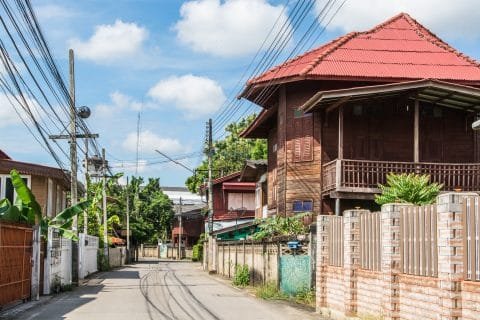


The beauty of Lampang station
We will also note the Lampang train station, considered as one of the most beautiful in Thailand. A mixture of European architecture (German-Art Nouveau to be precise) and Lanna whose exceptional conservation has been recognized by an association of architects under royal patronage.
Like any train station in Thailand, the atmosphere is special with an air of yesteryear. At the time of my visit, a train was arriving at the station, allowing us to see the sweep of whistles and flags of the agents.




Job Sao Nak
Baan Sao Nak, which means the house with multiple pillars (Nak being the word pillar, but in the local dialect). The name is simply due to the fact that this large teak wood building is built on stilts, which remains classic for constructions of this type in Thailand. But its particularity comes from the fact that due to its size, no less than 116 pillars are needed to support it!
Job Sao Nak can be visited for an entrance fee of 50 baht, which includes a tea tasting (well, you have to like it because it has a particular taste…) and biscuits.
Built in 1895 by a wealthy merchant of Burmese origin Mong Chan Ong and his wife) in a style mixing Lanna and Burmese architecture (the terrace in front in particular), this residence is still the property of the Mong Chan Ong descendants.
Eager to preserve their heritage, they began major renovations in 1964 to replace and solidify the famous pillars. It took 10 years to complete this restoration work, then they had the idea of showing it to share this heritage with everyone. Inside, you will find photos of family members from various periods as well as many antique objects and furniture.
As an anecdote, the large tree in front to the right of the house, which is called a Saraphi, is older than the house itself and is over 130 years old.











Next to the house, you have a small souvenir shop and refreshment stands with drinks. In the garden, there is another wooden building on 24 stilts. This is an old rice warehouse. It dates from the same period as the house, but is not the original one, which was removed and replaced by this one, in better condition. Note the horse-drawn carriage stored underneath even though it is not considered a garage.
For tea tasting and small cakes, it is under the house among the pillars that you will be served by the owner herself.
The Louis T. Leonowens House
Not far from there and well hidden, you can if you feel like it see the Louis T. Leonowens House. If this name rings a bell (you never know), it's because he was the son of Anna Leonowens, who was the tutor and English teacher for the many children of the King of Siam, King Mongkut (Rama IV I remind you) between 1862 and 1867.
If that doesn't ring a bell, watch the movie Anna and the King, starring Jodie Foster as Anna. Note that this 1999 film, based on a 1944 novel and based on Anna's memoirs, is banned in Thailand because it is fictionalized. The story involves a relative romance between Anna Leonowens and King Rama IV in the film, when the relationship remained purely professional to the authorities.
Old Market Street: Talad Gao (Kad Kong Ta)
Old Market Street is a bit like an open-air museum. Also known as Kad Kong Ta, it is located next to the Wang River in the heart of Lampang. It was a bit like the old business district of Lampang, also known as Thanon Talad Gao (ถนนตลาดเก่า) which therefore means, old market.

In this case, it was known as the Chinese market, in the early 19th century, when businessmen from Thailand, China, Myanmar, and even the United Kingdom came to do business, especially in logging. Along this artery, one can come across a good number of old wooden houses, but also solid structures. Starting with the Ratchada Bridge.
At the very end of the artery, you will find this arched bridge dating from 1894 (hence the fact that it is not very wide). Simply nicknamed the white bridge, it is hard to believe that it was at the time the longest bridge in Thailand with its 120 m crossing the Wang River, which runs along Talad Gao behind (as a reminder, the first bridge in Bangkok, the Memorial Bridge and its green steel structure crossing the Chao Phraya, only dates from 1932).

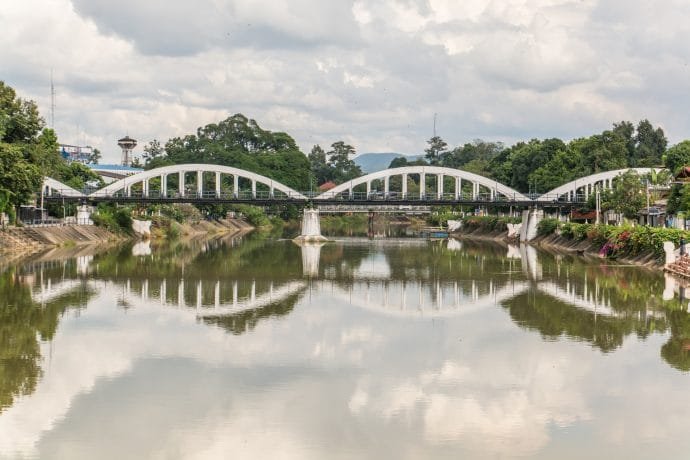
It is next to you can taste the best Khao Soy that I have been able to try to date. Khao Soy is a typical northern dish made with rice noodles, a yellow curry (a little spicy, but normally it's okay) and a chicken thigh.
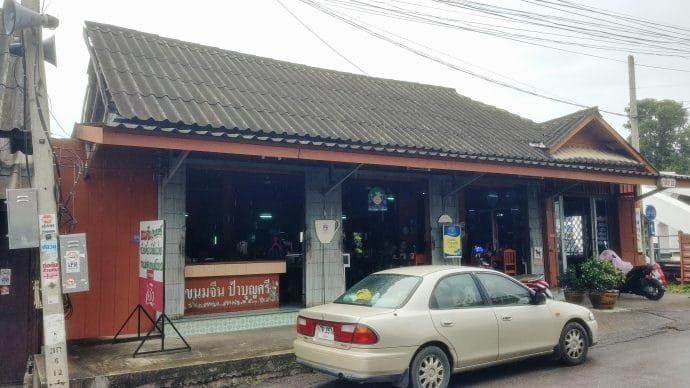
Another point regarding the Lampang old town. This one also seems to be getting into the fashion of " street art.", murals that add a "fun" dimension if you want to find them all. Knowing that I don't know how many there are to date, but I have only been around Talad Gao (Old Street Market), where I was able to spot a few.
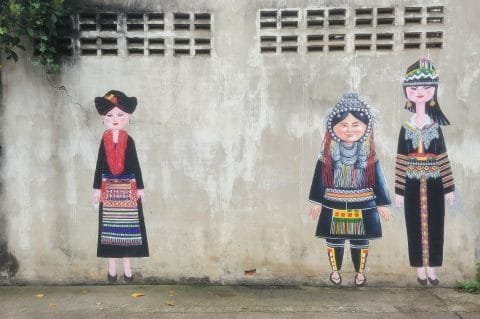
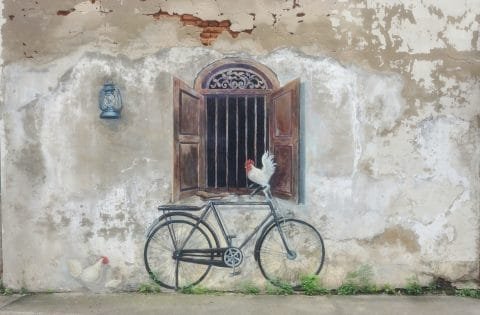
The old buildings of Talad Gao
The most famous of these ancient buildings is the Moung Ngwe Zin Building, owned by a former Burmese who worked for the British in the forestry industry. This house of 1908 whose main structure is made of teak wood, has a balcony and typical Burmese architecture (and probably influenced by the British). Its white facade with exposed beams contrasts particularly with the usual style of houses in Thailand.
It is very photogenic and therefore hides the house opposite, the Kanchanawong family house. Here again, a rich Burmese merchant is at the origin. The architecture recalls the Sino-Portuguese style and the houses on the streets of Georgetown in Penang or Phuket town, the main town of the eponymous island.
Dating from 1905, it is a mix of Chinese and Burmese style, with its balcony decorated with floral patterns. The neighboring house is of a similar style but more sober.


Further on, you can see another 2-storey house dating from 1918, Baan Mae Daeng, soberly renovated and not transformed into a hotel or restaurant, this building has beautiful wood carvings under the eaves and on the balcony. Opposite are 2 beautiful Thai-style wooden houses on stilts and another slightly set back, larger, more Western-style. Next door, another wooden building that is not ugly.
A few meters further you will pass another 2-storey building dating from 1913, Yean Si Tai Li Ki Building (also spelled Yan See Tai Lee Kee). This time built by a wealthy Chinese merchant using this building as a large business. It is therefore a Chinese style with a mixture of baroque elements, the roof and doors are beautifully engraved even if poorly maintained. For the record, this building now belongs to two different owners, so the painting of the exterior wall separates the place into two different colors.


If you continue to the entrance of Wat Ko Wasukaram temple, you will see on the corner an imposing house enthroned at the bottom of a beautiful garden, Baan Komsom. Built in 1917, this house was built by a Chinese construction company while the architect was foreign.
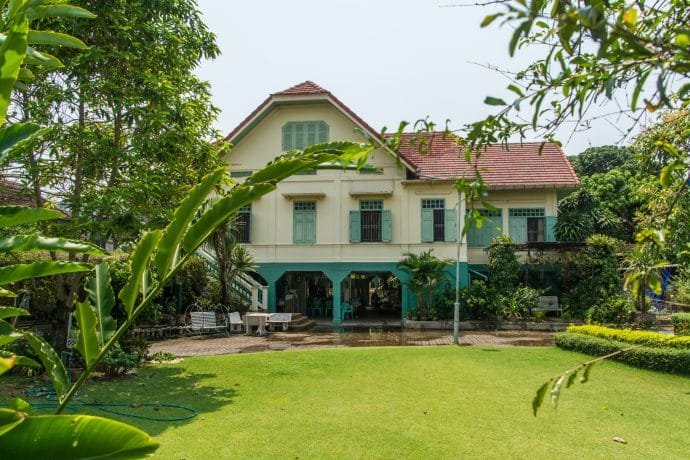
Finally, if you go to the end of Talad Gao Street, you will first pass in front of the art center, housed in a wooden house on stilts in the Thai style, then you will find yourself facing the Fong Li Building. Renovated and now converted into a café and hostel, The Prink, it would almost seem insignificant in the sense of being less old given its remarkable condition. However, this 2-story building, whose upper-floor terrace is covered with wooden panels with shutters, is one of the oldest in Lampang since its construction began in 1891.

If Talad Gao is a concentration of old houses, and you like that, you can always also stroll along the parallel street, Thipchang, which has beautiful remains. You can then see Baan Sinanon at the end, built in 1919, it is a villa of the Chinese merchant Sui Lee Sang, a two-story building in Italian style.
You also have to go through the perpendicular street, connecting Thipchang and Talad Gao. Tippawan Street includes Baan Boriboon, bought by a foundation wishing to preserve this heritage, it was renovated for 2 years a few years ago to become a center dedicated to art (the Lampang Performing Arts Center). Opposite, there is a group of old wooden houses of the most beautiful effect.


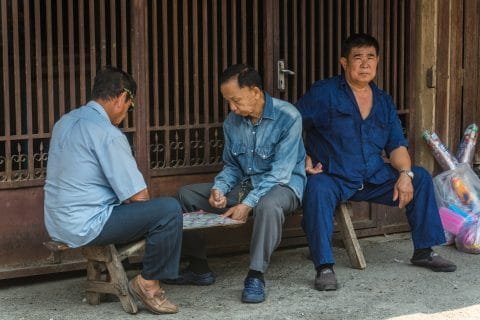


I could also mention the Jantaraviroj house or even nameless buildings in a sometimes dilapidated state, but which make Lampang one of the cities in Thailand with the greatest concentration of old buildings.
To help you find your way, here is a map made available by the municipality summarizing the street and its main buildings, mentioned in this article:
Interesting temples in Lampang
There are also several interesting temples to visit in Lampang.
Wat Phra Kaew Don Tao Suchadaram
I can't tell you much about this temple because I've never taken the time to visit it, yet it is the main temple in Lampang, and for good reason, given the name it might give you a clue, this temple, built in the 14th century, housed the famous Emerald Buddha from 1434 to 1468 and is now present in the royal temple of the Grand Palace in Bangkok.
Wat Pong Sanuk Nua
This is a temple that could go unnoticed as there are so many in Thailand, but this one stands out just by its name, in fact, Pong Sanuk can be translated as "the clan of the funny ones"... yes yes, you couldn't make it up! Well yes, to name this temple, which would have been done because of the name of the community that had recently settled in the area.

The temple is said to have been established since the founding of Lampang in the 7th century and it is also where the sacred pillar (a sort of vital sanctuary in a city since it is supposed to protect it from bad weather and political unrest) was originally located. You will find the "traditional" staircase lined with the naga and will then be at the foot of the golden chedi, next to which stands a wooden pavilion with undeniable charm. Cross-shaped at the base and with a stepped roof, this pavilion mixes Lanna, Burmese and Chinese styles.







Next to it you will have the Viharn Phra Chao Phan Ong in which there is a reclining Buddha. The main building below is less remarkable except for the hyper realistic wax statue of a monk, common in Thailand. You also have a small museum on the other side called the pavilion of a thousand Buddhas because there are thousands of statuettes on the walls of it.


Wat Chai Mongkol
Not to be confused with the similarly named temple in Ayutthaya, you can also call it Wat Jongka. This temple is special not for its place of prayer but rather its place of life. The building where the monks stay, called Kuti, is a 2-story cement building topped with a beautiful Burmese-style tiered roof.
Inside is a bronze Buddha cast in Mandalay, Myanmar, a wooden ceiling decorated with golden carvings and a monk ready to welcome you. For some reason, the site around the temple was once surrounded by a garden, with trees, lawns, etc. in short, a garden.
Today, it's like a desert around, everything has been removed. The question then arises, would a real estate developer have a hold on this temple (knowing that there is another one just opposite, the วัดป่าฝาง, or Wat Pa Pong knowing that I have not found an "official" transliteration)?
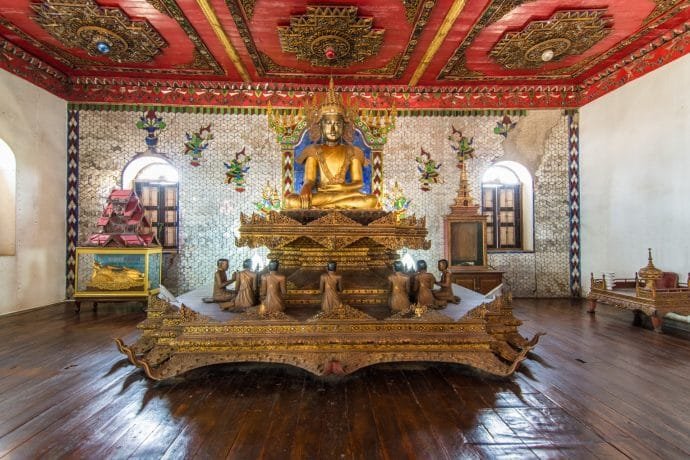
When I asked the monk, he seemed to say no, it was just that the trees were sick and they had turned everything upside down...

Wat Si Rongmuang
A century-old temple built in teak wood by Burmese immigrants and therefore taking up Burmese architecture or more precisely Shan style since they came from this state in the north of Burma.

One of the major differences being the horizontal orientation of the building, when the Lanna or Rattanakosin style, fashionable on the Bangkok side, is rather based on a front facade with the extension of the building at the back like the classic viharn that can be seen everywhere in Thailand.
Richly decorated and with some hints of Lanna style, Wat Si Rongmuang, also known by its old name Wat Ta Kanoi Burma (I told you names were complicated…), the interior is worth a look.



Wat Ko Wasukaram
As a bonus, if you come to see the old market street (which I recommend), you can always take a look at the old temple along the Wang River, which has a beautiful wooden structure, admittedly a little dilapidated (but given the evolution of the temple, I think they should renovate it soon).


Visitor information
How to get to Lampang
Knowing that it is the 2nd largest city in the north, it is very well served.
– It has an airport, accessible via Bangkok Airways or Nok Air.
– The Bangkok – Chiang Mai train line passes through Lampang
– Buses will generally have a direct connection to Lampang from the main cities of the country, Chiang Mai, Phitsanulok (near Suktothai), Bangkok to name a few.
Where to sleep in Lampang
I have tested several hotels in Lampang to date. 2 being rather in the city while another was more outside. Being transported, it is true that I was less careful about the precise location, because it would possibly be more interesting to find a small guesthouse close to the old city.
Hop Inn Lampang City Center
Budget: from 550 Baht (14€)
Convenient as it is located right opposite the city bus terminal (the station itself is only 1,4 km away), Hop Inn is a chain with a certain standard without having a high price, a sort of Thai Campanile hotel.
The only downside is that there aren't many restaurants nearby, except those in the surrounding shopping centers, knowing that the hotel doesn't have a restaurant. (so no breakfast) and the old streets are a little further. Otherwise the building is recent and the rooms are modern, very clean, the reception is quick and efficient, which earned me the opportunity to stay there twice.
The Coconut Hotel
Budget: from 650 Baht (17€)
The hotel is quite new even a little away from the city center. I had chosen it for its design that stands out and its affordable price, a good quality / price ratio in short. But a vehicle is essential and we feel that it is more targeted for Thais.
Nabanmae Resort
Budget: from 720 Baht (19€)
Not needing to stay in the city center, I tried out this hotel north of town, located on the main road. I was intrigued by its unusual appearance, a sort of European-style building. Overall, it's a good hotel choice in terms of value for money. I was worried that the proximity to the road might be a problem, but it was fine in the room I stayed in.
The rooms themselves are quite charming, but they might not suit everyone as they feature Japanese-style futons. There's also a swimming pool out front, which is always a nice bonus, and in the morning, there's a pleasant café at the entrance to the complex, which comprises several buildings.
Not tested, but I wanted to include it in this article, I came across a nice boutique hotel, not far from Lampang station, the Karpenter Lampang, located in a superb house whose exterior is covered with wooden planks with a beautiful effect.
It has a good reputation, a good breakfast and a comfortable room, in short, I should try it and it starts at only €34.
See more info and book Karpenter Lampang Hotel

Further information: some attractions in Lampang province
Wat Chaloem Phra Khiat
A little way north of Lampang city (60 km), you will find Wat Chaloem Phra Kiat Phrachomklao Rachanusorn, its full name. It is also known as Wat Phra Bat Phu Pha Daeng, when I first went there. It is a temple offering a superb view of the surrounding mountains. Located in the Chae Hom district, along road 1035, it is more interesting to stop there if your next stop is Chiang Rai.
It is still possible to do a tour from Chiang Mai in a day by combining the visit with the old town of Lampang, the Wat Phra That Lampang Luang temple and possibly adding the hot springs of the Chae Son national park, by doing a loop Chiang Mai – Lampang – Wat Phra Bat Phu Pha Daeng – Chae Son – Chiang Mai for example (in doing so, it still represents 300 km in the day, I should point out).
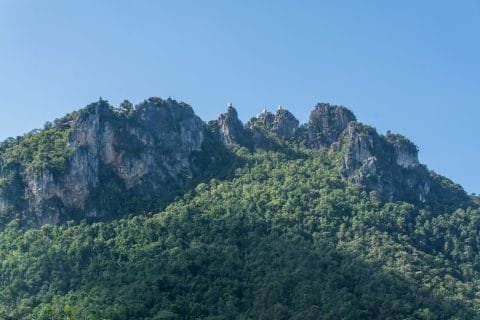
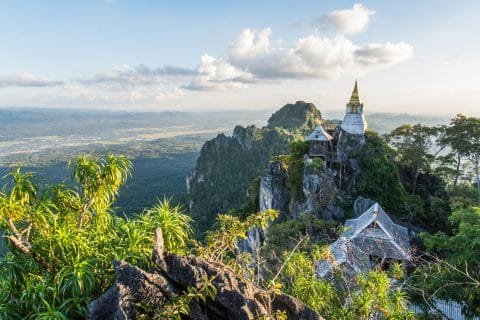
I won't go into more detail here since I wrote an entire article on this temple:
https://thailande-et-asie.com/wat-chalermprakiat-temple-atypique-region-lampang
National parks and other natural sites
I won't go into detail, because I'm deliberately targeting this article on the old town. I'll write a dedicated article on the province one day when I've been able to explore it a bit more, but I'm throwing out a lead for those who would like to dig a bit outside the city and discover the region.
To summarize, we can cite 2 national parks, the Chae Son National Park, known for its hot springs and the Doi Khun Tan, a mountain range separating the Lampang Valley and the Chiang Mai Valley. This park is especially famous among Thais for its longest railway tunnel (1362 m) crossing it than for its nature walks and waterfalls.

For those who are curious, you can take a look at the Pha Thai cave and its impressive thousand-year-old stalactite (estimated at 9 million years old) 65 km north of the city (following the main road to Chiang Rai), as well as emerald lagoon Lom Phu Kiew a few km further up (similar in idea to the “ emerald pool » from Krabi).
As you will have understood, there is plenty to do if you really look, like all the provinces of Thailand in the end. But the city already remains a good starting point to get away from the classic visits of the north leading almost everyone to Chiang Mai only.
Did you like the article? share on Pinterest!





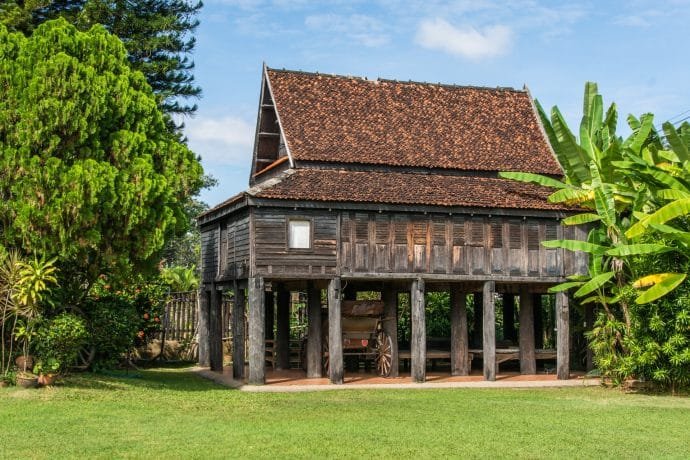

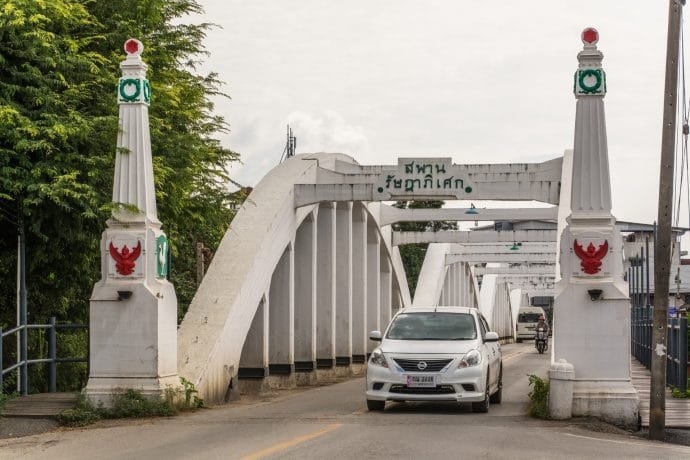




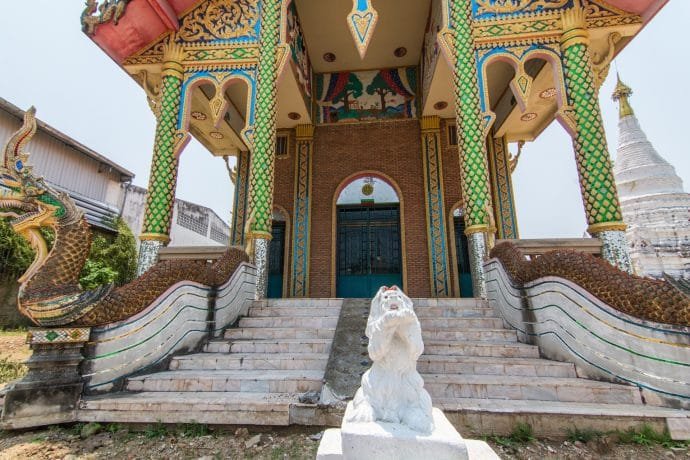

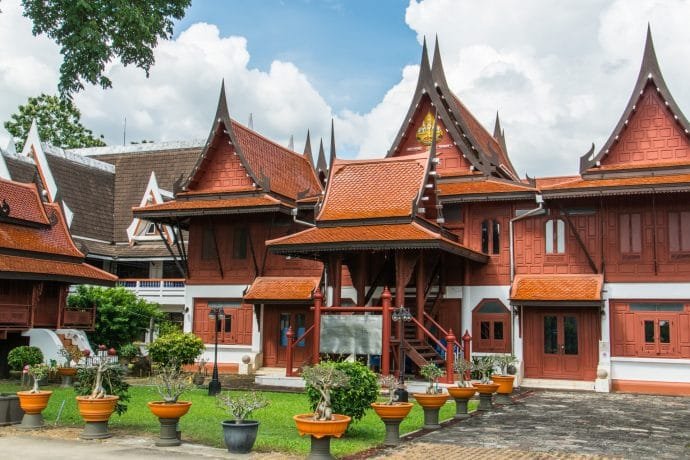

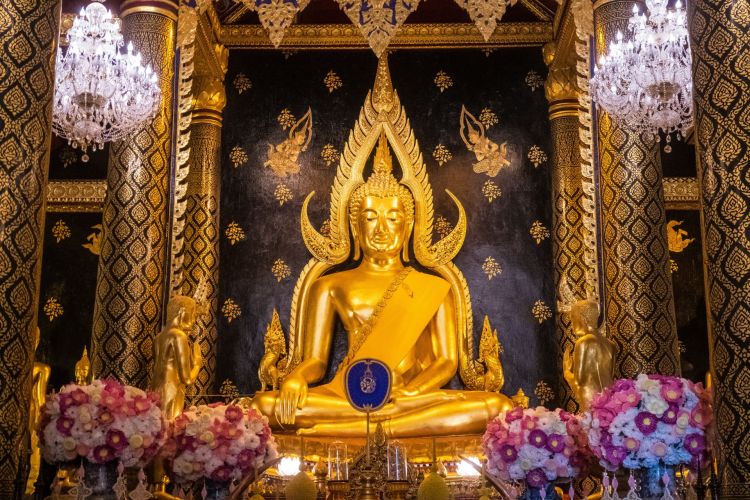

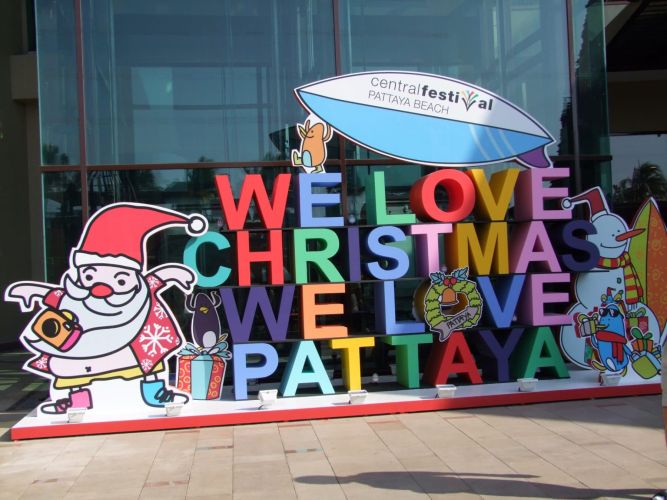
11 Comments
Very nice photos.
Very nice course
Thank you so much!
Hello,
Very tempting this "temple in the clouds"... One question though: are the stairs vertiginous like suspended in the void along the rock like in China? Or does it correspond all the way to the photo of the red iron stairs? I would like to get an idea to see if it works for me...Thanks 🙂
Hello Béatrice,
I can reassure you right away, it's all the way like in the photo, nothing dizzying or looking out onto the void 😉
Thanks Romain… It’s a given in the course!! 😀 Can’t wait
Thank you very much for all this information shared, I am currently preparing my second trip to South East Asia and your advice will allow me to discover even more of Thailand.
Hello, here I am back from my trip. Indeed, it is very affordable, without vertigo, and the climb is not very long, a little steep sometimes but iron stairs all the way. I was surprised to be already at the top… Come early or late, it quickly gets crowded in these small spaces. But it is magnificent 🙂 Thanks again
The pleasure is all mine, that's the goal of the blog and I'm happy to have made you discover this beautiful place!
Thank you for the quality and precision of the information.
Thank you for these wonderful comments about a country that is dear to me.
With pleasure !